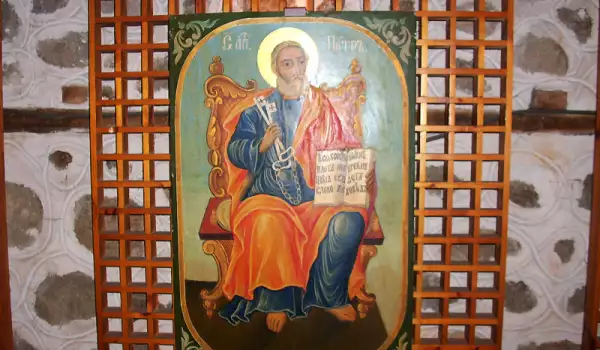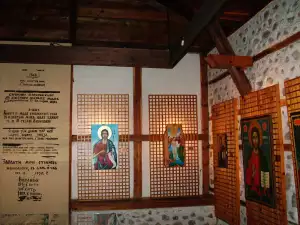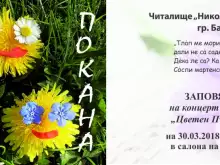Metoha, Bansko

The exposition in Metoha, Bansko has been on permanent display since 1986, divided into 3 parts, with the icon room containing only originals painted by iconographers from the Bansko school.
Metoha was once part of the Hilandar Monastery but after the Liberation of Bulgaria, it came under the jurisdiction of Rila Monastery. During Ottoman rule, it was a place where mostly young girls lived, who gathered provisions for the monastery, as well as clothes and food products. It was where any Christian could give whatever they could to help the monks.
It contains the history of the school, all in one spot, since its founding by Toma Vishanov, who was known as Molera, and who had completed his artist training in Vienna. Called Molera, stemming from the German "Мaler", meaning artist, and with a Bansko dialect added in the result is "Molera".
In the museum, visitors can see original icons by Toma Vishanov and his students, who built their own school, renowned throughout Bulgaria and the world. The best works of the school were collected in one place in 1949, in Metoha, one of the oldest buildings in Bansko.
The exposition houses icons from the year 1770 until the onset of the First World War, when the school dwindled down. Metoha encompasses 4 stylistic eras, each with its own distinct feeling for the colors. This is owed to the contributions of the Zograf Monastery during the passage of the Bansko masters, as well as the adoption of styles from other schools.

In 1984 - 86, Metoha took its well-deserved spot, earned by Bansko iconographers, in a permanent museum exhibition. The school is presented in 3 main halls:
1. The donors - all who made donations to the monasteries, for their construction, icon-painting, the wood carving of the churches, monasteries and chapels.
2. The studio - contains the tools and belongings of some of the apprentices in the school, as well as a copy of one of Molera's sketchbooks.
3. The exposition of the school begins in the 3rd hall, which presents copies of works by Toma Vishanov from the Rila Monastery; St. Luke, the Intercession of the Theotokos, as well as the Circle of Life - one of the most complete circles regarding the life of every person, the rise and fall - both of people and of nature.
It was an honor for the Bansko iconographers to try to avoid the strictness of canon in the Biblical texts, attempting to be closer to the people, fate and to paint historical figures such as St. Clement of Ohrid, Cyril and Methodius, who are considered sacred to every Bulgarian, Christian and Slav. Individuals who are close to all of us, who have contributed to Bulgaria in a historical sense.
News
- New
- Last commented
 Bansko gathers the best snowboarders in the world
Bansko gathers the best snowboarders in the world Bansko Puts up its Easter Decorations
Bansko Puts up its Easter Decorations Bansko Opens the New Winter Season on December 16
Bansko Opens the New Winter Season on December 16 The Starchevata Festival to be Held for 7th Year in a Row
The Starchevata Festival to be Held for 7th Year in a Row Folklore Festival to Gather Fans at Eleshnitsa
Folklore Festival to Gather Fans at Eleshnitsa Tourist Boom in the Bear Park Near Belitsa
Tourist Boom in the Bear Park Near Belitsa Summer Theater Begins in Bansko
Summer Theater Begins in Bansko




